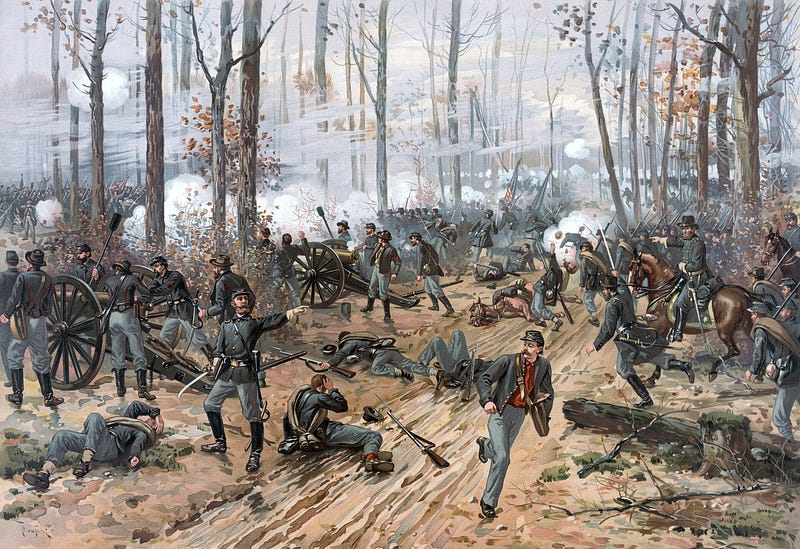Angel’s Glow: The Mysterious Phenomenon of Civil War Wounds
Written on
Chapter 1: The Battle of Shiloh
The Battle of Shiloh was a significant and bloody clash, resulting in 23,746 casualties over just two days. Among these figures were 3,482 fatalities, nearly evenly split between Union and Confederate forces. This battle briefly held the title of the bloodiest in U.S. history until later encounters surpassed it, marking a dark chapter in American military history.
After the conflict, thousands of soldiers lay wounded along the roads and in makeshift camps across southern Tennessee. As night fell, an extraordinary event began to unfold: some soldiers’ injuries started to emit a glow in the dark. Strikingly, those with glowing wounds appeared to be recovering more effectively than their fellow soldiers. This baffling occurrence led to widespread speculation.
Initially dismissed as mere superstition, the overwhelming volume of glowing wounds soon commanded attention. Witnesses dubbed this phenomenon "Angel's Glow," interpreting it as a divine sign aiding the injured.
Section 1.1: What is Angel’s Glow?
But what exactly was Angel’s Glow? Was it a figment of imagination, or was there a real explanation behind it?
Subsection 1.1.1: The Science Behind the Glow

In the days following the battle, a relentless downpour soaked the area. Many soldiers found themselves cold, muddy, and waiting for medical attention. While such conditions are detrimental for recovery, they were surprisingly favorable for a unique strain of bacteria. It wasn't until 2001 that a determined student uncovered the source of Angel's Glow: Photorhabdus luminescens.
This rare bacterium is associated with specific nematodes found in the soil around Shiloh. The combination of inclement weather and the presence of these nematodes created the ideal environment for Photorhabdus luminescens to thrive. This bioluminescent bacteria infiltrated the wounds of the injured soldiers, causing them to glow.
Instead of resulting in infection, as one might expect in such scenarios, this unique bacteria surprisingly promoted healing. The bacteria produced a byproduct that functioned as an antibiotic, leading to improved survival rates among affected soldiers. Thus, many believed they had experienced a miraculous recovery.
What a disheartening sight it must have been for those without glowing wounds to witness the apparent healing of their comrades.
Section 1.2: The Intersection of Myth and Science
The tale of Angel’s Glow intertwines elements of myth, faith, and scientific discovery. While some have dismissed the story as mere folklore, scientific inquiry reveals its plausibility, recreating the conditions that allowed it to occur. Thus, science transforms myth into reality.
For the soldiers on that battlefield, their recovery stemmed from an invisible force they could not comprehend, which they perceived as divine intervention. They believed they had been touched by an angel.
Chapter 2: A Legacy of Mystery
The odds of survival attributed to this glowing bacteria were remarkably low. To the soldiers, it was a miracle; to contemporary readers, it is a testament to the wonders of science, layered with an enchanting mythos.

